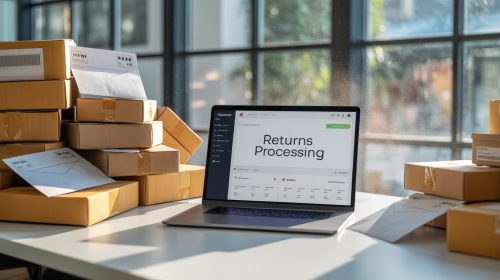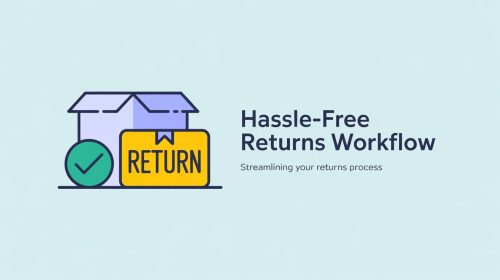Learn what return rate really means, how to calculate it, and smart strategies to reduce returns in your online store. Improve customer satisfaction and boost profits with tips from Backsy.
Learn what return rate really means, how to calculate it, and smart strategies to reduce returns in your online store. Improve customer satisfaction and boost profits with tips from Backsy.

Returns are a natural part of eCommerce. No matter how great your product is, there will always be customers who return it — and that’s okay. But if your return rate keeps rising, that’s a sign you can’t ignore.
In this post, we’ll help you understand exactly what return rate means, how to calculate it, why it matters to your business, and — most importantly — how you can improve it without sacrificing customer satisfaction. Let’s dive in.
Return rate is the percentage of orders that are returned out of your total sales.
Here’s the formula:
Return Rate (%) = (Number of Returned Orders ÷ Total Orders) x 100
So if you had 1000 orders last month, and 120 of them were returned, your return rate would be:
(120 ÷ 1000) x 100 = 12%
Well, it depends on your industry.
According to Shopify and other eCommerce benchmarks:
The overall average for online stores is around 16–17%, but this isn’t a number you should blindly follow. For example, if you’re in fashion, a 20% return rate might be standard. But if you’re selling skincare and seeing a 20% return rate, something might be very wrong.
Many store owners treat returns as a cost of doing business. But if you ignore your return rate, you risk:
Each return can cost you shipping (both ways), repackaging, restocking, and potentially the loss of full retail value. According to some studies, handling a single return can cost between $10–20, and even more if the product can’t be resold at full price.
A high return rate often signals a mismatch between what customers expect and what they receive. It can mean your sizing is off, your images are misleading, or your shipping damages products. These things chip away at trust — and repeat business.
Your return data tells a story. If you analyze it regularly (like with Backsy’s smart return reports), you might discover that most returns come from a certain SKU, or from customers in a specific region, or that returns spike after a particular promotion.
And when you spot the pattern, you can fix it.

Now the good part: how do you improve this metric?
Reducing return rate isn’t about making it hard for people to return items. In fact, the opposite is true — a smooth return process builds customer trust. The key is to prevent the need for returns in the first place.
Let’s explore five strategies that actually work:
Why this works:
Returns often happen because the product didn’t meet expectations. That could mean the color looked different, the size didn’t fit, or the item had features the customer didn’t anticipate.
What to do:
Example: A shoe store added a sizing chart with foot measurements in centimeters and reduced size-related returns by 18% in one quarter.
Why this works:
Customers are more confident in their purchase when they feel supported. Helping them before they buy reduces post-purchase regret.
What to do:
Real-life case: Backsy client EllaFit Activewear added a smart chat assistant for sizing and saw return rates on leggings drop by 23%.
Why this works:
A portion of returns happen due to damaged goods or items that look “cheap” on arrival.
What to do:
Bonus tip: Don’t underestimate the unboxing experience. A clean, intentional packaging experience reduces returns and boosts loyalty.
Why this works:
If a product isn’t perfect, many customers are open to exchanging — but only if it’s easy.
What to do:
Example: A Backsy-powered clothing brand saw 26% of returns converted into exchanges, which preserved the revenue and kept the customer happy.
Why this works:
Trends hide in your returns data. Digging into them can show you exactly what’s going wrong — and how to fix it.
What to do:
Pro tip: Don’t just look at return rates — look at the reason codes and customer comments. That’s where the gold is.
Returns aren’t just a loss — they’re a message. They tell you what your customers want, what they didn’t expect, and how your store experience can be better.
By monitoring your return rate, improving your product presentation, supporting customers pre-sale, and streamlining the exchange process, you’re not just reducing returns — you’re building a smarter, stronger brand.
At Backsy, we believe returns can be a growth opportunity. That’s why we’ve built tools to help merchants not only manage returns but turn them into brand-building moments.
✅ Try Backsy’s smart analytics to spot high-return items
✅ Set up auto-suggestions for exchanges
✅ Customize your return portal with clear policies and branding
✅ Track trends and customer feedback — all in one place
👉 Start your free trial of Backsy — and make returns work for you, not against you.






Table of Contents
ToggleDeliver a seamless return & exchange experience that builds trust and drives revenue.
From automating return flows to offering flexible refund options, Backsy helps modern Shopify brands reduce friction, save hours, and keep customers coming back
Streamline returns & exchanges with powerful automation, flexible conditions, and a seamless customer experience — built for Shopify brands.
Product
Get the latest updates and tips from Backsy.
© 2025 created with Backsy